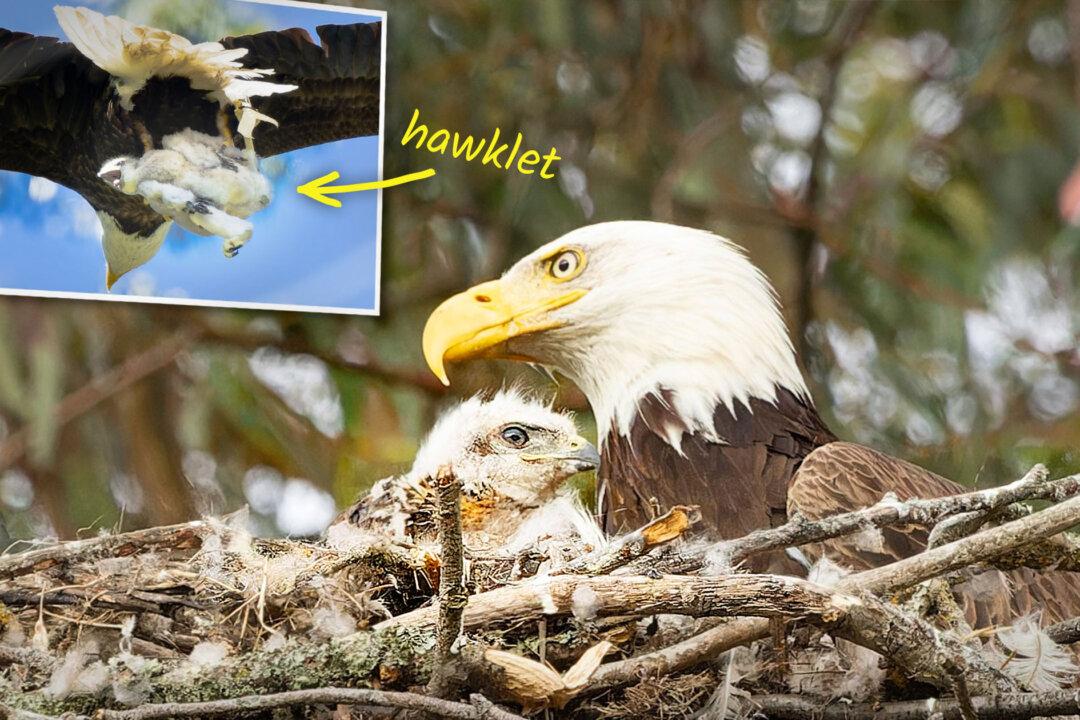He heard the mother bald eagle’s cry before she was even seen. Staked out at a nest in Santa Clara County, tripod prepped, camera ready to shoot, Dr. Doug Gillard took his best guess where she might appear. He pointed his camera straight up and blindly fired away at 80 frames per second. It was a direct hit.
Dr. Gillard, 63, had been scoping the nest since January, intent on capturing the entire eagle mating cycle as it unfolded. The eaglet came and was getting bigger—hearing its mother’s call that day, May 28, meant one thing. “Dinner,” Dr. Gillard told The Epoch Times.






